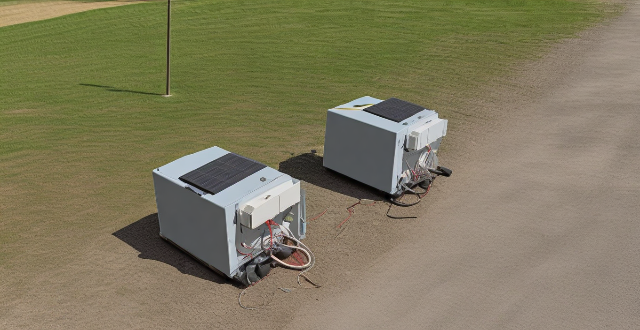Metal-air batteries have gained significant attention due to their high energy density, low cost, and environmental friendliness. However, there are several challenges that need to be overcome for widespread adoption of these batteries. The major obstacles include anode material corrosion, catalyst degradation, oxygen supply, heat management, and safety concerns. To address these issues, researchers are exploring alternative materials, protective coatings, nanostructured catalysts, solid oxide electrolytes, cooling techniques, and safety protocols. Potential solutions also involve developing new materials and structures for anodes, catalysts, and electrolytes, investigating innovative designs for oxygen storage and supply systems, implementing advanced cooling techniques and safety protocols, and collaborating with industry partners to commercialize promising technologies. By addressing these challenges and leveraging emerging technologies, metal-air batteries have the potential to revolutionize energy storage and power generation in various applications.

Challenges to Overcome for Widespread Adoption of Metal-Air Batteries
Introduction
Metal-air batteries have gained significant attention in recent years due to their high energy density, low cost, and environmental friendliness. However, there are several challenges that need to be overcome for widespread adoption of these batteries. In this article, we will discuss the major obstacles and propose potential solutions.
Major Challenges
Anode Material Corrosion
The anode material in metal-air batteries is prone to corrosion, which reduces the battery's lifespan and performance. To address this issue, researchers are exploring alternative materials such as alloys or composites that can resist corrosion better than pure metals. Additionally, protective coatings can be applied to the anode surface to prevent direct contact with the electrolyte.
Catalyst Degradation
The catalyst used in metal-air batteries can degrade over time, leading to reduced efficiency and capacity. To improve catalyst stability, researchers are investigating new materials and structures that can maintain their activity for longer periods. For example, using nanostructured catalysts with high surface areas can increase the number of active sites and improve durability.
Oxygen Supply
Metal-air batteries require a continuous supply of oxygen from the atmosphere to function properly. However, the availability and quality of oxygen can vary depending on location and weather conditions. To ensure a consistent oxygen supply, researchers are developing methods to store and release oxygen within the battery system. One approach is to use solid oxide electrolytes that can generate oxygen through electrolysis of water.
Heat Management
Metal-air batteries generate heat during operation, which can cause thermal runaway and damage to the battery components. To manage heat effectively, researchers are exploring cooling techniques such as liquid cooling or phase change materials that can absorb excess heat and release it when needed. Additionally, designing the battery architecture to optimize heat transfer can help distribute heat more evenly throughout the system.
Safety Concerns
Metal-air batteries contain flammable materials and can pose safety risks if not handled properly. To mitigate these risks, researchers are developing safety protocols and monitoring systems that can detect and prevent potential hazards. For example, incorporating sensors into the battery system can monitor temperature, pressure, and voltage levels and trigger alarms or shut down the system if necessary.
Potential Solutions
To overcome these challenges and promote widespread adoption of metal-air batteries, researchers are working on several potential solutions:
* Developing new materials and structures for anodes, catalysts, and electrolytes that offer improved performance and durability.
* Investigating innovative designs for oxygen storage and supply systems that ensure a reliable source of oxygen regardless of external conditions.
* Implementing advanced cooling techniques and safety protocols to manage heat effectively and minimize safety risks.
* Collaborating with industry partners to commercialize promising technologies and demonstrate their feasibility at scale.
By addressing these challenges and leveraging emerging technologies, metal-air batteries have the potential to revolutionize energy storage and power generation in various applications, from electric vehicles to renewable energy systems.